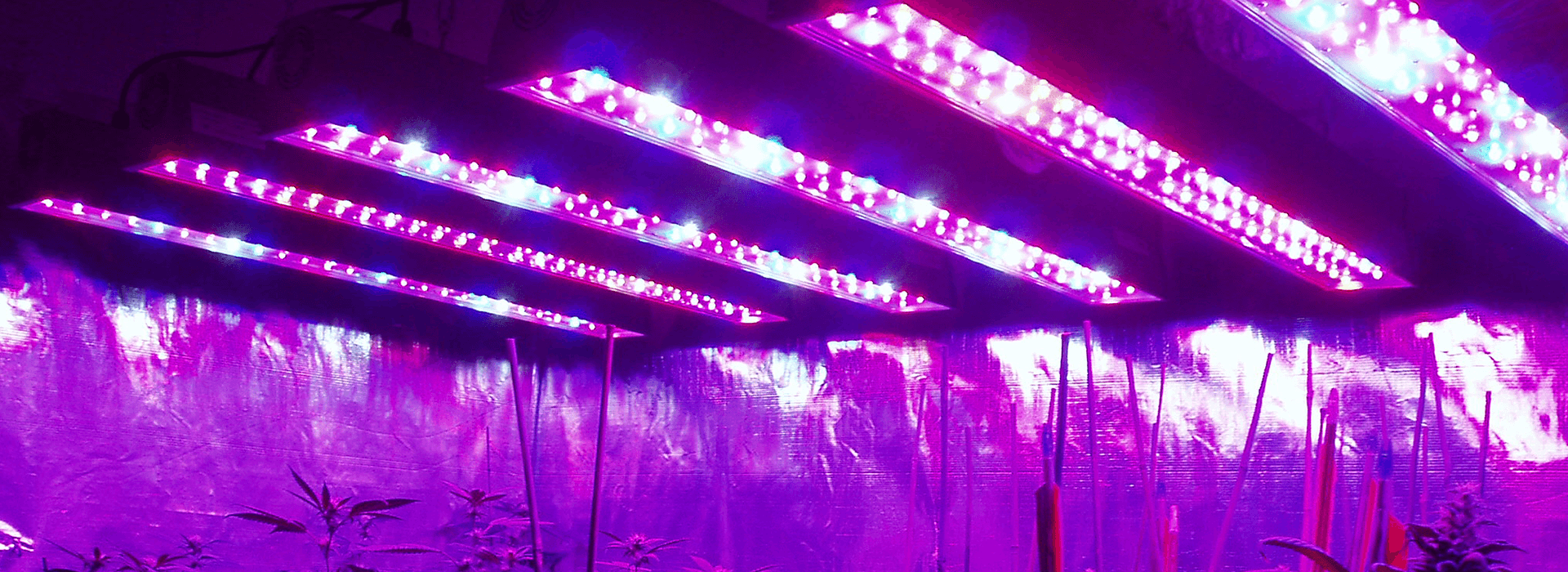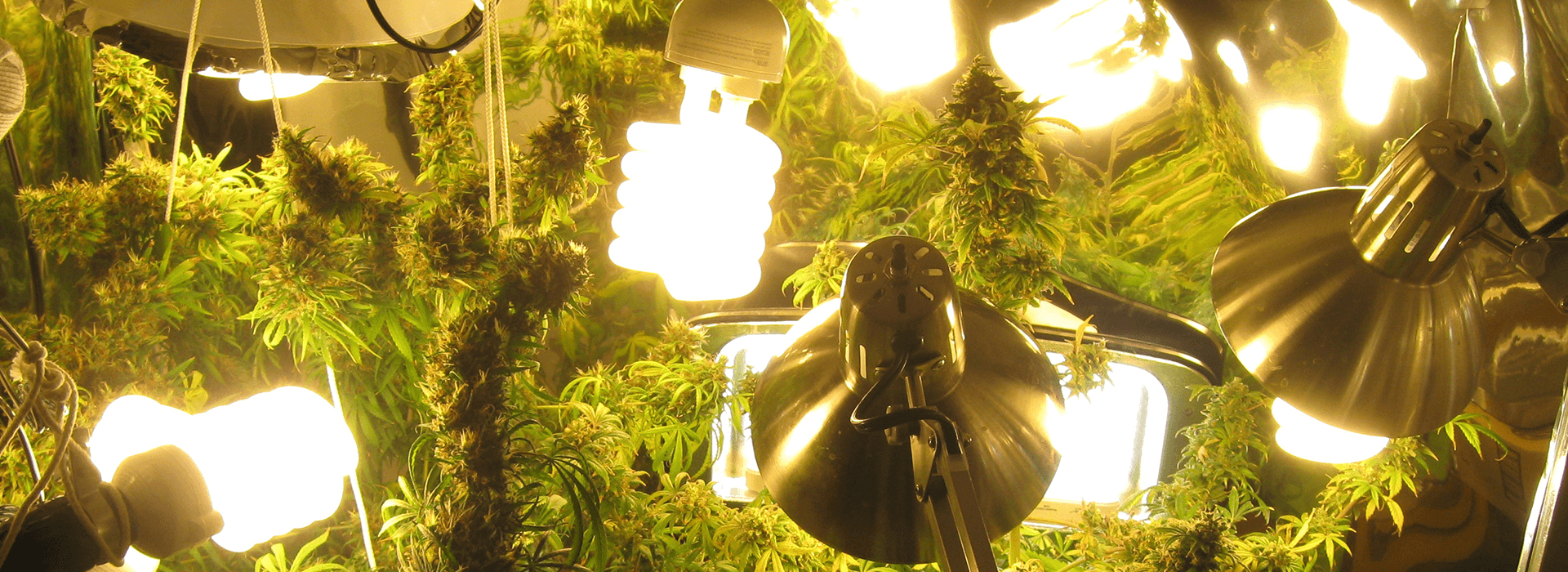There are 4 basic types of grow lamps. All have special advantages and disadvantages. You have to decide which is best suited for your requirements. For beginners we recommend HID grow lamps.

HID Grow Lamps (MH / HPS Light Bulbs)
For incandescent lamps you need a ballast and a reflector so that the light is not lost to the ceiling. The MH light bulbs are used for the vegetative stage. The HPS light bulb is a good addition to the MH light bulb, because it provides exactly the right light spectrum for the flowering stage. You can use MH and HPS bulbs with the same ballast as well as with the same reflector, so you only have to buy a set with ballast, reflector, MH and HPS light bulb (everything has to have the same power) MH / HPS lamps are very bright and produce a lot of heat, which is why they have a relatively high power consumption. Since the MH / HPS lamps become very warm, they have to not be too close to the plants.

LED Grow Lamps
Good LED's can be configured depending on whether the plants are in the vegetative stage, flowering stage or in the seedling stage, so you only need one lamp for all stages. A big drawback of LED's for beginners is that the purchase costs are significantly higher than e.g. MH / HPS lamps (approx. 3-4 times). However, LED's are very economical in electricity and pay off after the first yearly electricity bill. In addition, LEDs are not very warm and can therefore be closer to the plants (if desired).
You should not use cheap LED's because they do not have sufficient light output and usually do not have the right light spectrum.
It is often stated by the manufacturers which HID lamps they correspond. Usually LEDs consume approximately half of the power as HID lamps. Good LED's can easily replace HID and CFL lamps and are much more efficient.
In addition, LED lamps do not emit any radiation that can bleach and damage objects like sunlight or HID lamps.

Fluorescent Tubes
Fluorescent tubes are very economical in terms of electricity. Tubes with about 40W for clones and about 200W for the growth phase are usually sufficient. Cold white fluorescent tubes (white light approx. 6000K) are recommended for the growth phase. These lights will make the plants grow faster and help them form more branches. Fluorescent tubes are not recommended for the flowering phase, as they do not emit enough light.
Advantages of Fluorescent Tubes:
Energy efficiencyCost-effective in purchasingThere are different sizes (lengths)Do not need cooling, since they produce only little heat
Disadvantages of fluorescent tubes:
Must be disposed of separately and must not be disposed of in domestic wasteAre not as bright as MH or HPS lamps (The brightness is not always critical)Fluorescent tubes should be placed right above the plants.

CFL Grow Lamps (Energy Saving Lamps)
CFL lamps should be very close to the plants (about 10cm distance, not more than 25cm!). In addition, the rule of thumb is 200W for max 4 (small to medium size) plants. The advantages of these lamps are that they produce little heat, are cheap and can save you energy costs. Use 2700K lamps for the flowering stage and 6400K lamps for the vegetative stage. Reflectors are very important for CFL lamps, as a lot of light is lost to the ceiling. For CFL lamps you do not need a ballast, since this is already installed in the light bulb. CFL lamps are not recommended for a larger amount of plants, since you would need a lot of lamps.
